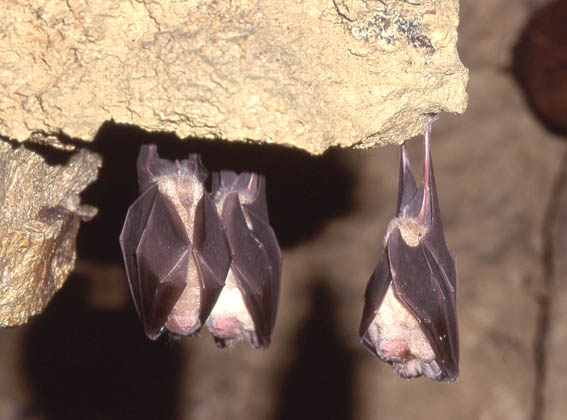
The Island-City of Samal in the southern Philippines has about seventy caves, which used to be teeming with bats.
But now, most of these caves are empty and silent. In some parts of the island, bats are hunted for food by people—particularly for "pulutan."
They are also sometimes killed out of superstitious fear.
Their natural homes are disturbed because of guano mining and swiftlet nest collection.
Bats are also threatened by natural predators like snakes, and calamities like earthquakes and forest fires.
But thanks to the efforts of nature conservationist Norma Monfort, there's a haven for Samals' bats: a 280-meter-long cave tucked away from public incursion.
'Angels of the night'
Monfort, who is the founder and president of the Monfort Bat Cave and Conservation Foundation, considers bats are the front-line warriors against climate change. “They are pollinators,” she points out.
“They maintain so many species of plants, trees and fruits that are habitats for other important species.
If we lose them completely, we stand a great chance to never again enjoy the wonderful fruits and plants we have today.”
“Angels of the night” is what she calls these gentle nocturnal creatures.
“They are angels because the service they do for humanity and the environment is invaluable,” she explains.
“They have always been the major agents of reforestation.”
There are more than 1,100 bat species in the world, but the Philippines is home to 26 indigenous bat species—more than any other country.
But sadly, most of these bats are threatened.
“The threat to bats in the Philippines is quite serious considering that very little literatures and researches have been published about them,” says Monfort.
“In addition, bats are still misunderstood until now.
In fact, only very few Filipinos are aware about the importance of bats to the environment and to our economy.
Because of this, it is much easier for people to hunt bats down because they feel bats are dispensable.”
The bats that inhabit Monfort’s place are called Geoffroy’s rousette fruit bats, known scientifically as Rousettus amplexicaudatus.
A life with bats
The fruit bats have been a part of Monfort's life for as long as she could remember.
She was barely a toddler when her family would seek shelter inside the cave during the Second World War.
Japanese war planes would circle around Samal Island before bombing the adjacent Davao.
“Together with some of our neighbors, we would run to the backyard cave,” she recalls.
Growing up with bats in her backyard made her love and care for these creatures.
Fortunately, she was able to do so after she inherited the land from her parents.
But due to agrarian reform laws, which limit individual ownership of agricultural land, she faces losing the bats' nesting grounds.
And so she raised her own funds to bring scientists from Bat Conservation International (BCI) over to her cave to advise her on the best way to ensure the continued protection of her beloved bats.
Together with BCI and six other government and non-governmental organizations, Monfort signed an agreement protecting the cave as the Monfort Bat Conservation Park in 2006.
Within six months, Monfort also created Philippines Bat Conservation, an environmental group that reaches beyond her colony to promote conservation of all Philippine bat species.
World record holder
In 2010, the Guinness Book of World Records officially declared the cave to contain the world's biggest colony of fruit bats, estimated at around 1.8 million.
Early the following year, an American cave-mapping expedition stumbled upon an unusually high number of pregnant bats in the Monfort bat colony. The species does not usually give birth in the first month of the year, making the discovery a “big surprise” and forcing the scientists to halt their mapping project, Monfort reports.
The cause of the bat baby boom is still unknown.
However, Monfort suspects one factor may be that the cave is protected from humans as an ecotourism site, which allows their numbers to grow.
Today, an estimated 2.4 million bats taking refuge at the cave.
Furthering conservation
In 2011, Monfort was honored as one of the “Disney Worldwide Conservation Fund Conservation Heroes.”
The award is bestowed to “extraordinary individuals who are passionate about protecting animals and habitats in areas of critical concern.”
Winning the award, Momfort said, means helping further the cause of bat conservation in the country and elsewhere.
In a letter to friends, she wrote: “That I have been given this recognition is simply signaling more work lies ahead for me using this ‘tool’ and putting it into good use… There is so much to be accomplished that I plan to leave behind for the children of the world.”
— TJD, GMA News

No comments:
Post a Comment